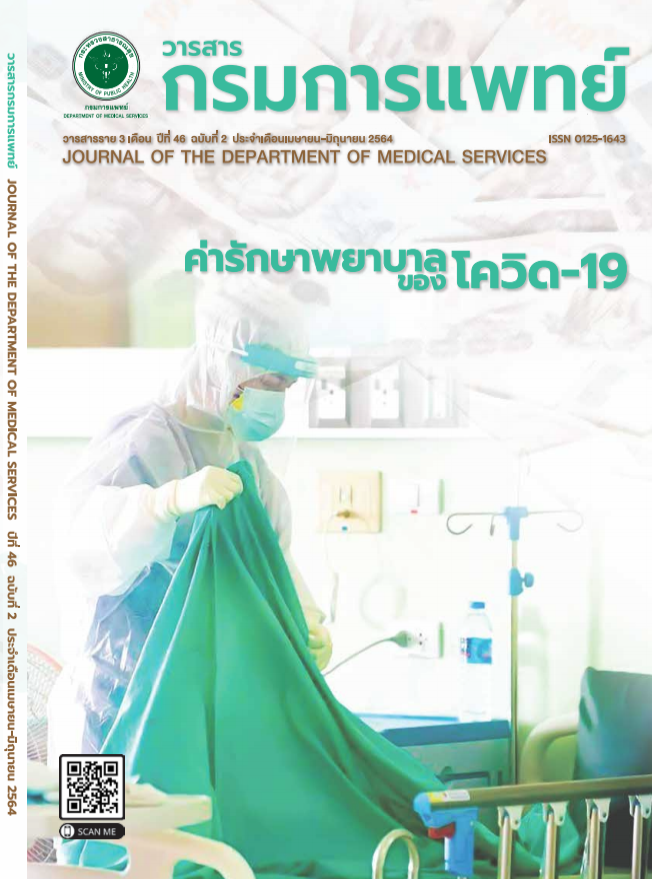A Systematic Review on the Effectiveness of Topical Calcineurin Inhibitors in Vitiligo
Keywords:
Topical calcineurin inhibitors, Vitiligo, Systematic reviewAbstract
Background: Topical calcineurin inhibitors are used as the second-line drugs for the treatment of vitiligo. However, no summarization of all effectiveness has been evaluated. Researchers are interested in the subject.Objective: This study aimed to review literature systematically on the effectiveness of topical calcineurin inhibitors in vitiligo.Method: A systematic review search of databases that met the inclusion and exclusion criteria. Relevant data were obtained from PubMed. A systematic search of databases resulted in keywords such as topical calcineurin inhibitors and vitiligo. Comparative randomized controlled trials investigating topical calcineurin inhibitors in vitiligo were searched, written in English. Two independent authors evaluated the title, abstract, quality of studies, and extract data.Result: A systematic search of databases revealed that 4 articles met the inclusion and exclusion criteria from 33 articles. The result showed that topical calcineurin inhibitors be effective for the treatment of vitiligo.Conclusion: Topical calcineurin inhibitors can be used as an alternative for the treatment of vitiligo. However, randomized controlled trials are still needed in order to can be synthesized and analyzed for meta-analysis and confirm the effectiveness of topical calcineurin inhibitors.
References
Vasanop V. Vitiligo. 1st Edition. Bangkok, Thailand: DermatologyDepartment of Medicine, Faculty of Medicine Ramathibodi Hospital, Mahidol Univetsity; 2018; 3-285.
Southern Regional Hospital of Tropical Dermatology-Trang Province. Information of Patients (2017-2019).[Internet] 2016.[cited 2017 May 10]. Available from: http://www.trangskin.co.th.
Mohammad TF, Al-Jamal M, Hamzavi IH, Harris JE, Leone G,Cabrera R, et al. The Vitiligo Working Group recommendations for narrowband ultraviolet B light phototherapy treatment of vitiligo. J Am Acad Dermatol 2017; 76: 879-88.
Hann SK, Kim HI, Im S, Park YK, Cui J, Bystryn JC. The change of melanocyte cytotoxicity after systemic steroid treatment in vitiligo patients. J Dermatol Sci 1993; 6: 201-5.
Cockayne SE, Messenger AG, Gawkrodger DJ. Vitiligo treated with topical corticosteroids: children with head and neck involvement respond well. J Am Acad Dermatol 2002; 46: 964-5.
Kumari J. Vitiligo treated with topical clobetasol propionate.Arch Dermatol 1984; 120: 631-5.
Kandil E. Treatment of vitiligo with 0-1 per cent betamethasone 17-valerate in isopropyl alcohol-a double blind trial. Br J Dermatol 1974; 91: 457-60.
Schaffer JV, Bolognia JL. The treatment of hypopigmentation in children. Clin Dermatol 2003; 21:296-310.
Grimes PE, Soriano T, Dytoc MT. Topical tacrolimus for repigmentation of vitiligo. J Am Acad Dermatol 2002; 47:789-91.
Jung H, Oh ES. FK506 positively regulates the migratory potential of melanocyte derived cells by enhancing syndecan-2 expression. Pigment Cell Melanoma Res 2016; 29: 434-43.
Lepe V, Moncada B, Castanedo-Cazares JP, Torres – Alvarez MB,Ortiz CA, Torres-Rubalcava AB. A double-blind randomized trial of 0.1% tacrolimus vs 0.05% clobetasol for the treatment of childhood vitiligo. Arch Dermatol 2003; 139: 581-5.
Mehrabi D, Pandya AG. A randomized, placebo-controlled,double-blind trial comparing narrowband UV-B plus 0.1% tacrolimus ointment with narrowband UV-B plus placebo in the treatment of generalized vitiligo. Arch Dermatol 2006; 142: 927-9.
Silverberg NB, Lin P, Travis L, Farley-Li J, Mancini AJ, Wagner AM,Annette M, et al. Tacrolimus ointment promotes repigmentation of vitiligo in children: a review of 57 cases. J Am Acad Dermatol 2004; 51:760-6.
Xu AE, Zhang DM, Wei XD, Huang B, Lu LJ. Efficacy and safety of tarcrolimus cream 0.1% in the treatment of vitiligo. Int J Dermatol 2009; 48: 86-90.
Grimes PE, Morris R, Avaniss-Aghajani E, Soriano T, Meraz M, Metzger A. Topical tacrolimus therapy for vitiligo: therapeutic responses and skin messenger RNA expression of proinflamatory cytokines. J Am Acad Dermatol 2004; 51: 52-61.
Tiraki Y, Hitomi K, Sato Y, Izaki S. Tacrolimus-induced rosacealike dermatitis: a clinical analysis of 16 cases associated with tacrolimus ointment application. Dermatology 2012; 224: 309-14.
Berger TG, Duvic M, Van Voorhees AS, VanBeek MJ, Frieden IJ.The use of topical calcineurin inhibitors in dermatology: safety concerns. Report of the American Academy of Dermatology Association Task Force. J Am Acad Dermatol 2006; 54: 818-23.
Higgins JPT, Green S, Editors. Cochrane Handbook for Systematic Reviews of Interventions 4.2.6. [Internet] 2006. [cited 2017 May 6].Available from: http://www.cochrane.org/resources/handbook/hbook.htm.
Radakovic S, Breier-Maly J, Konschitzky R, Kittler H, Sator P, Hoeningsmann H, et al. Response of vitiligo to once-vs.twice-daily topical tacrolimus: a controlled prospective,randomized, observer-blinded trial. J Eur Acad Dermatol Venereol 2009; 23:951-3.
Cavalie M, Ezzedine K, Fontas E, Montaudie H, Castela E,Bahadoran P, et al. Maintenance therapy of adult vitiligo with 0.1% tacrolimus ointment: a randomized, double-blind,placebo-controlled study. J Invest Dermatol 2015; 135:970-4.
Dawid M, Veensalu M, Grassberger M, Wolff K. Efficacy and safety of pimecrolimus cream 1% in adult patients with vitiligo: results of a randomized, double-blind, vehicle-controlled study. J Dtsch Dermatol Ges 2006; 4: 942-6.
Downloads
Published
How to Cite
Issue
Section
License

This work is licensed under a Creative Commons Attribution-NonCommercial-NoDerivatives 4.0 International License.
บทความที่ได้รับการตีพิมพ์เป็นลิขสิทธิ์ของกรมการแพทย์ กระทรวงสาธารณสุข
ข้อความและข้อคิดเห็นต่างๆ เป็นของผู้เขียนบทความ ไม่ใช่ความเห็นของกองบรรณาธิการหรือของวารสารกรมการแพทย์



